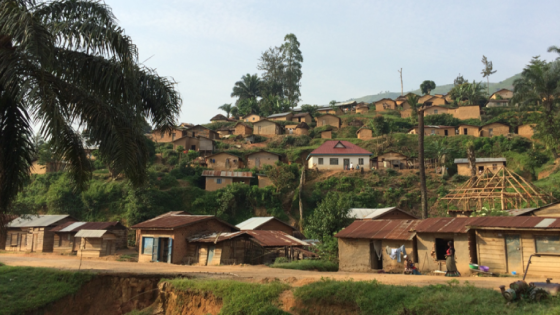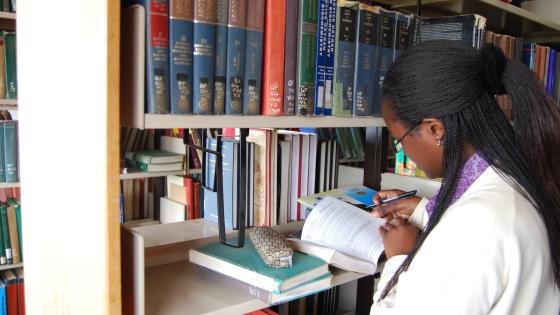Almost universally, societies have non-falsifiable beliefs about their origins, life after death, and rituals that activate supernatural processes to help navigate life. Such beliefs, despite being almost certainly incorrect, are ubiquitous. They are widespread within developing countries in general, and in Africa in particular (e.g. Leeson and Coyne 2012, Leeson 2014, Gershman 2016). Why do such beliefs persist?
In a recent paper (Nunn and Sanchez de la Sierra 2017), we examine the role of ‘magical’ beliefs in warfare in the context of the Eastern Democratic Republic of the Congo, which has experienced persistent violence and large-scale conflict since the Rwandan Genocide of 1994. It is common for villages to be under the de facto rule of militants who collect taxes and rule through violence. Villages that are not under the control and ‘protection’ of a militant group are frequently raided (Sanchez de la Sierra 2017). In the face of this insecurity, beliefs in spells that protect villagers and militants against death in combat have become widespread. This fact raises the question of why these magical beliefs arise and persist, especially in such high-stakes conflict-ridden regions, where errors in judgement can have high private costs.
'Incorrect' beliefs, 'correct' behaviour
Our study suggests that these magical beliefs arise because, despite being ‘incorrect’, they induce behaviour that is ‘correct’. In particular, protection spells cause actors to undertake actions that are not optimal for them as individuals, but are optimal for the society as a whole.1 This occurs because beliefs in protection spells lower the perceived costs of contributing to a public good (i.e. defending the village from invaders). Decreasing the perceived costs of contributing to a public good is beneficial in settings where the contributions levels would (in equilibrium) otherwise be lower than optimal. Because such false beliefs make the group better off, this offers a plausible explanation for why they persist in environments where intergroup competition is strong, like areas with intense conflict.
Our study examines beliefs in spells that provide protection against death from bullets (‘bulletproofing’) using information from interviews and focus groups undertaken in the province of South Kivu, in the Democratic Republic of the Congo (DRC) in March of 2015. In the study, we present the example of a village, Bulambika (Bunyakiri), typical of the area. Up until 2012, the area had been exposed to attacks by Hutu militias, called the Front Démocratique de Libération du Rwanda (FDLR), who regularly engaged in pillage, rape, and killings in Bulambika and neighbouring villages.
Figure 1 The village Bulambika in the Kalehe Territory of the DRC (March 2015)
The liberation of the village began one evening in 2012, when an elder of the village had a dream. In the dream, the ancestors of his tribe taught him how to use supernatural forces to bulletproof the young men in the village. The spell was a form of protection, called gri-gri in the local language. It ensured that any bullets fired at someone protected by the spell would either miss or bounce off. After obtaining the necessary ingredients to implement the bulletproofing spell, the elder tested it by shooting a goat that had received the gri-gri. When the goat survived, this served as proof that the protection worked.
To become bulletproof, one had to participate in a ritual. In addition, following the ritual one had to respect certain conditions for the protection to continue to work. The conditions included: no drinking rainwater, no sexual acts with a woman during her period, as well as no eating zucchini. More generally, the conditions can differ widely across groups. Other examples of common conditions include: no looking backwards during battle, no stealing, and no raping. Although the protection only lasted for a short period of time – often hours or days – failing to respect the conditions would cause the spell to stop working immediately.
After the discovery, the elder would perform the protection rituals on those who volunteered to protect the village and fight back against the FDLR militants. Now when the village (or other villages in the area) were raided by the Hutu militia, rather than fleeing, the young men would stay, undergo the ritual to activate the bulletproofing spell, and fight against the FDLR. Initially, the defenders of the villages only had machetes and their gri-gri to fight the FDLR. Some villagers who stayed to fight were shot and died. However, their death alone did not prove that the protection was false. Instead, it was seen as evidence that the individual likely failed to follow the conditions. Over time, the villagers began to kill their enemies and acquire their guns. This process continued over the course of many months. By the time we arrived in the village in March of 2015, the villagers had freed Bulambika (and the other villages in the area) and there had been peace for the past two years.
The persistence of 'incorrect' beliefs
In our study, we explain that this example from the village of Bulambika provides insights into why this particular belief, which appears false, might persist. The bulletproofing ritual allowed the community to mobilise combatants by systematically biasing downwards their beliefs about the likelihood that they would die in combat. While, at the individual level, this false belief is costly – it causes individuals to under-estimate the risk of combat – it nonetheless allowed the community to mobilise against the aggressors, and successfully eradicate them. Thus, although detrimental for some, it was beneficial for the community.
We provided a more-formal illustration of this logic by describing a simultaneous-move N-player game where N villagers choose the amount of effort to allocate towards protecting their village. Village defence is a public good that is produced through team production. Specifically, output is increasing in the effort levels of all villagers and greater effort by one villager increases the marginal product of other villagers. One is better able to defend the village if others are fighting alongside one as well. We further assume that the payoff of every citizen depends on the public good that is jointly produced, as well as on his/her own effort. Each player’s utility is increasing in the amount of public good that is produced and decreasing in the amount of effort exerted. In such a setting, players’ efforts are strategic complements and in the Nash equilibrium, effort levels will be below the efficient levels. A belief in the efficacy of bulletproofing serves to decrease the perceived costs of effort to an individual. Thus, if one believes that they are protected from the enemy’s bullets, then this decreases the perceived costs of greater bravery and effort. This results in greater effort provision by all individuals and a provision of the public good that is closer to efficient. We show that the ‘right’ amount of ‘wrong’ beliefs can achieve the socially efficient outcome.
Of course, just because a ‘wrong belief’ is socially optimal does not mean that it will occur. However, in the presence of group-level selection, villages with the false belief of bulletproofing will be more likely to survive, and therefore this belief could spread throughout the population. Group-level imitation of successful groups would also have the same consequence of improving survival (Boyd and Richerson 2002). Thus, in an evolutionary setting where groups compete for survival, such false beliefs increase the average fitness of villages that hold them. Eastern Congo, like many other war-torn parts of the world, has characteristics that make it particularly likely that group-level selection is strong (Henrich 2004). The groups (i.e. rural villages) tend to be small and homogenous. There are also relatively low levels of migration between the groups, since militia groups typically prevent members from leaving. When migration occurs, it is mostly to urban centres and seldom between rural villages. Lastly, because of the high rates of between-group conflict, selection between groups is very strong. With these characteristics, strong group-selection forces can induce false beliefs to spread and persist.
Our study illustrates how beliefs systems that are likely false are able to persist, even when they involve very high stakes, namely death. We provide an explanation for their persistence based on cultural evolution. Within economics, we generally assume that individuals are rational utility maximisers holding consistent beliefs that are updated through logical processes, like Bayes’ rule. However, it is possible that in many settings, like in the one studied here, false beliefs and a lack of rational updating result in better outcomes at the group level. We view the role of group-level selection and the importance it plays in determining which beliefs emerge as important avenues for future research within economics.2
References
Boyd, R and P J Richerson (2002), “Group Beneficial Norms Can Spread Rapidly in a Structured Population,” Journal of Theoretical Biology, 215(3): 287-296.
Gershman, B (2016), “Witchcraft Beliefs and the Erosion of Social Capital: Evidence from Sub-Saharan Africa and Beyond,” Journal of Development Economics, 120: 182-210.
Henrich, J (2004), “Cultural Group Selection, Coevolutionary Processes and Large-Scale Cooperation,” Journal of Economic Behavior & Organization, 53(1): 3-35.
Leeson, P T (2014), “Oracles,” Rationality and Society, 26: 141-169.
Leeson, P T and C J Coyne (2012), “Sassywood,” Journal of Comparative Economics, 40: 608-620.
Norenzayan, A (2013), Big Gods: How Religion Transformed Cooperation and Conflict. New York: Princeton University Press.
Nunn, N and R Sanchez de la Sierra (2017), “Why Being Wrong can be Right: Magical Warfare Technologies and the Persistence of False Beliefs,” American Economic Review Papers and Proceedings, 107(5): 582-587.
Sanchez de la Sierra, R (2017), “On the Origin of States: Stationary Bandits and Taxation in Eastern Congo,” Working paper, University of California Berkeley.
Endnotes
[1] Our explanation is in line with Norenzayan (2013), who provides a conceptually similar argument that explains the mergence and persistence of moralising high gods across some societies.
[2] Outside of economics, the importance of group-level selection has long been recognized; see Henrich (2004) for an excellent overview.





